The roar of the crowd as the running back heads into the end zone for a touchdown. The satisfying smack of the ball as a middle blocker delivers a thundering spike. The sweet swish of a goal hitting the back of a soccer net. The unison cries of cheerleaders as they execute a cupie. The anguished yell of a player going down with an anterior cruciate ligament tear.
Those first four sounds are welcome signs that fall sports season has arrived. That last one is not, but alas, it happens all too often to athletes around the Central PA area. Fall sports injuries are commonplace, yet many of them are preventable when you plan ahead.
 This is important, because more kids than ever are playing sports. According to the National Federation of State High School Associations, an all-time-best 7.8 million kids participated in sports last year, including more than 319,000 in Pennsylvania. Many of their parents also remain active, with one in four still participating in sports.
This is important, because more kids than ever are playing sports. According to the National Federation of State High School Associations, an all-time-best 7.8 million kids participated in sports last year, including more than 319,000 in Pennsylvania. Many of their parents also remain active, with one in four still participating in sports.
With this in mind, we’ve put together a guide to fall sports safety and injury prevention, designed to address concerns we hear from our patients and their parents about how to enjoy a fun and healthy fall season. We love sports, and we want our patients to feel confident and secure as they participate in them. Follow these tips to keep playing hard this fall.
The Most Common Fall Sports
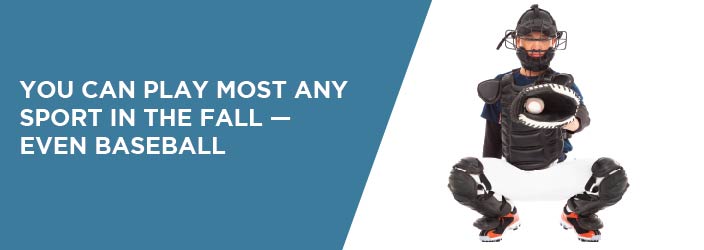
You can play most any sport in the fall — even baseball, once relegated to spring, has fall ball while basketball has indoor leagues in October and November. But some of the most popular traditional fall sports at the high school, college or adult level include:
- Football
- Field hockey
- Cross country
- Soccer
- Cheerleading
- Volleyball
- Tennis
- Golf
These sports all require a mix of cardiovascular training and strength to succeed, as well as precision. It’s not easy to hit a tiny ball onto the green or veer around mud puddles that pop up suddenly as you run a course. Unfortunately, each sport also carries some risk, whether it’s from whacking into an opposing team’s player, being thrown up in the air, or executing a forehand swing again and again.
The Most Common Fall Sports Injuries
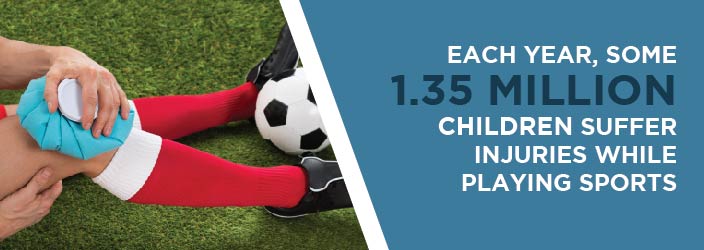 Each year, some 1.35 million children suffer injuries while playing sports. Of those, strains, sprains and fractures are the most common. We treat those here at OIP, along with many other conditions. Here’s a look at some of the sports injuries most likely to be sustained during the fall and a few things to look out for and keep in mind when dealing with these conditions.
Each year, some 1.35 million children suffer injuries while playing sports. Of those, strains, sprains and fractures are the most common. We treat those here at OIP, along with many other conditions. Here’s a look at some of the sports injuries most likely to be sustained during the fall and a few things to look out for and keep in mind when dealing with these conditions.
Fractures
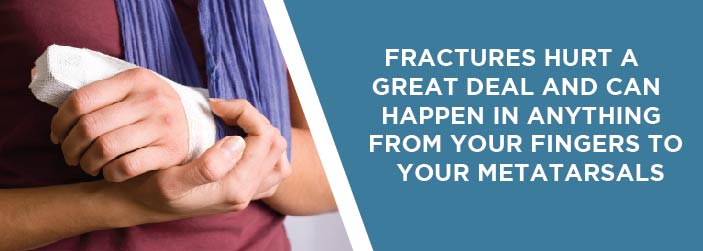
Nearly every sport calls for rapid movement, and you often come into contact with other players. Anyone who’s ever watched a penalty corner in soccer knows how easy it is to get knocked around when you’re going for the ball. Add in sticks in field hockey, and it’s little wonder broken arms and legs can happen.
Fractures hurt a great deal. Though we tend to think of a broken arm or leg, you can suffer broken bones in anything from your fingers to your metatarsals in your feet. Not every fracture is the same, either. We see a range of different broken bones:
- Open fracture: A bone pokes through skin
- Comminuted fracture: A bone has been broken more than once
- Bowing fracture: A bone bends but doesn’t snap, a condition limited to children
- Complete fracture: A bone breaks in two
- Greenstick fracture: One side of the bone is cracked, but the other remains intact
Fractures require immediate treatment. Not all breaks will need a cast, but many will necessitate a long break from the field.
Strains
Muscle strains come from sudden movements, moving in a way the body isn’t used to or overuse. We often think of strains as the aches that dog weekend warriors, but an athlete in great shape can still sustain a strain. Football, soccer and field hockey players tend to suffer more back and leg strains, while tennis, golf and volleyball players are more prone to arm, elbow and neck strains.
Symptoms of a muscle strain may include:
- Swelling
- Spasming
- Cramping
- Trouble moving
The best treatment for strains includes a mix of rest, icing and elevation. Your muscle needs time to repair itself, which will happen more quickly if you reduce the pressure on it by letting it relax as much as possible. For a leg or ankle strain, crutches may even be necessary for a few days. In severe cases, surgery could be necessary for a strain, but most will heal in a short period of time.
Sprains
Sprains are tears or stretches of your ligaments, which tether bones together at a joint. Most sprains occur when you twist part of your body in an awkward way. For instance: you land on the side of your ankle instead of your foot after kicking a ball. Fall sports can lead to all types of sprains, from ankles to elbows and knees. Hand injuries can even occur in a sport such as soccer, where you don’t use your hands, if you fall and land awkwardly on your hand.
Many people who tear their ACLs, one of the most devastating types of fall sports sprains, often report hearing a pop or feeling the tear. An ACL injury may require surgery and months of rehabilitation, and athletes may be limited in what they can do on the field when they return. In most cases, however, you can heal from a sprain through:
- Rest
- Icing and compressing
- Immobilizing with a splint
- Elevating
- Taking anti-inflammatories to reduce swelling
Concussions
No matter the season, concussions are a constant when it comes to sports. Contact sports such as football often lead to hard blows to the head. In soccer, repeatedly heading the ball can result in a concussion. Cheerleaders can fall from heights of five feet or more when executing flips, lifts or pyramids. Not every blow to the head results in a concussion, but they can occur from what may appear to be a mild knock.
Be aware of the symptoms of concussions and keep an eye out for them after a head blow. They include:
- Nausea or vomiting
- Head and eye pain when exposed to a bright light
- Confusion or disorientation
- Fatigue
- Ringing in the ears
If you experience those symptoms, you should contact your doctor immediately. They’ll recommend the proper treatment, which will likely include a mixture of rest and refraining from activities that require a lot of thinking. If you’ve had more than one concussion, you may need to discuss further safety measures to avoid long-term brain distress.
Shin Splints
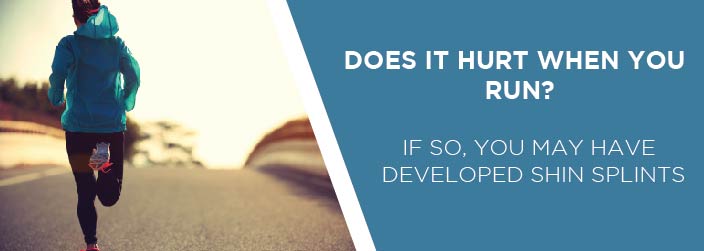
Do your lower legs feel sore or tender? Does it hurt when you run? You may have developed shin splints, an overuse injury often seen in fall sports where athletes run at a high intensity, such as cross country, soccer or field hockey. The repetitive motion of running — jarring the tissues holding your muscles to your bone — causes shin splints.
They tend to occur early in a season, when your body isn’t used to running, and ease as your body adjusts. Upping your mileage or workout intensity too quickly can spur shin splints, as can running on hard surfaces, such as concrete. You may be predisposed to developing shin splints if you have high arches, too.
Most cases of shin splints will respond to the usual treatments for strain, including rest and icing. It’s important to take time away from your sport to allow your body to heal sufficiently before you start running again. But in a small number of cases, athletes need further treatment, such as:
- When the orthopedist suspects a stress fracture
- Tendonitis develops
- You don’t have shin splints at all, but rather a rare condition called chronic exertional compartment syndrome, in which pressure builds up in the muscles.
Patellofemoral Syndrome
Pain in the front of the knee can be excruciating. If your knee hurts when you squat, sit, walk up the stairs or jump, you may have developed patellofemoral syndrome, which is common in athletes, and especially in teens. Symptoms include the knee buckling or making grinding and popping sounds.
Patellofemoral syndrome occurs when the cartilage beneath the kneecap becomes worn or soft. This can lead to a shifting of position of the kneecap, and poor alignment can cause the pain.
Initially, your doctor will advise you to avoid any activities that cause pain in the knee. It’s also treated by:
- Wearing a brace to keep the kneecap in place
- Ice and rest
- Avoiding long periods in bent-knee positions
- Strengthening the knee with stationary bike riding
- Taking an anti-inflammatory medicine
How to Prevent Fall Sports Injuries
Now you know what injuries fall sports players are most susceptible to. The good news is, you may be able to avoid some of these injuries.
 The first and most important rule of injury prevention for any sport, whether it’s football or field hockey, is to get a physical. Most high schools and middle schools require athletes to have a physical at the beginning of any sports season. The pediatrician will examine the athlete for any signs they should not be competing, or tip off parents for things to keep an eye on.
The first and most important rule of injury prevention for any sport, whether it’s football or field hockey, is to get a physical. Most high schools and middle schools require athletes to have a physical at the beginning of any sports season. The pediatrician will examine the athlete for any signs they should not be competing, or tip off parents for things to keep an eye on.
The physical is essentially a proactive way to address any limitations or problems your child may experience in their chosen sport. For instance, if a volleyball player suffered an ACL tear a year earlier, the doctor may have special instructions about running and jumping. You may also want to consult your child’s orthopedist if they’ve had issues in the past.
Of course, not all athletes are kids. In fact, injuries can be far more common for “weekend warriors” who limit their activity to short, intense bursts on the weekend. They put themselves at greater risk of getting hurt because their body has not been conditioned to such intensity. It’s easier for a muscle to tear or an ankle to give out when the body is put in such distress.
If you haven’t had a physical in a couple years — or worse, longer than that — get to the doctor before your flag football, soccer or volleyball season begins. Think of it like your yearly car inspection. You need to know everything’s working right before you can get back on the road.
Other Fall Sports Safety Tips
If you or your child have already had your physical, great job! But there are a number of other fall sports injury prevention tips you can follow. Make sure you keep these in mind so your family can enjoy a fun and injury-free season.
Warm Up Properly
Tip: Getting the body limber and ready to move will prevent many sports injuries. To reference the car analogy once more, your car can’t go from 0 to 100 miles per hour in an instant. It needs time to build to that top speed. It’s the same for your body.
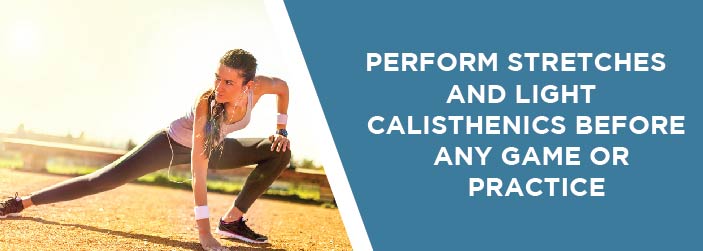 Execution: Perform stretches and light calisthenics before any game or practice instead of jumping into sprints or full-body blocking, and your body will be ready to move without hesitation.
Execution: Perform stretches and light calisthenics before any game or practice instead of jumping into sprints or full-body blocking, and your body will be ready to move without hesitation.
Cross-Train to Prevent Injury
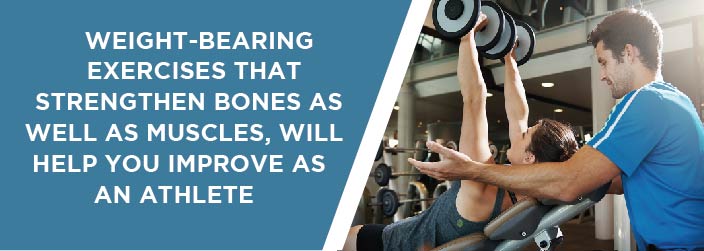
Tip: The stronger your body is, the better it can handle strains and respond to pressure. Many athletes these days have a tendency to specialize — that is, to play just one sport. That can be great for developing skills, but it means your body does the same thing over and over, and it can make you more susceptible to injury. Challenging the body with new exercises, including weight-bearing exercises that strengthen bones as well as muscles, will help you improve as an athlete, too.
Execution: At least once a week, do something other than your chosen sport. If you’re a runner, try lifting weights. If you’re a football player, try swimming. If you’re a volleyball player, try biking. Use different muscles in order to balance out your regular training.
Make Sure Courts and Fields Are in Good Condition
Tip: You wouldn’t let your child go to a school where the doors were falling off their hinges or the windows were bashed out. Don’t let them play on a shoddy field or court, either — the consequences can be just as dangerous. If a soccer player streaking down the field suddenly catches their foot in a divot, they could sprain their ankle or worse.
Execution: Ask coaches if playing surfaces have been inspected. Don’t be afraid to speak up. If this concern has never been raised before, offer to act as a liaison between your league and others to improve the condition of area fields. For youth and adult sports, many leagues rely on volunteers to get fields ship-shape. You may need to help out to ensure your or your child’s safety.
Rest After Sustaining an Injury
Tip: Athletes tend to be competitive. They want to get back on the field as soon as possible, and many will try to skimp on the time off they’ve been told to take. They may claim “I feel fine!” or “I don’t really need three weeks of rest!” But that’s usually not true. The doctor has prescribed this time off because it’s necessary to heal properly, even if they can’t feel it happening.
Execution: Follow doctor’s orders to the letter. Don’t return to the field until the doctor has okayed it. Though it may seem devastating to miss a “big game,” athletes who come back too soon could be endangering their careers, not just their seasons.
Speak Up About Pain
Tip: Especially when you’ve suffered a blow to the head, being proactive can help protect your health. Concussions carry even more serious consequences when they are not treated. There’s often a desire among athletes to appear “tough,” so they play through the pain. But in truth, pain is your body’s way of telling you something’s wrong.
Execution: See your doctor or orthopedist if you suffer pain that lasts more than a few hours, you suffered a blow to the head or you simply know something in your body isn’t right. Remember: the sooner an injury gets treated, the sooner you can be back on the field.
Invest in High-Quality Equipment
Tip: Playing sports can be expensive. It’s tempting to skimp on some of the “extras,” such as mouth guards or cleats, that aren’t provided by the school or that you have to replace every few years. But in the long run, it’s better for your wallet — and your health — to spend the money on proper equipment to keep you or your child safe.
Execution: Talk to other parents or your teammates about where to find the best-quality equipment. A coach or trainer may also recommend effective brands or stores. You can often find dentists or dentists-in-training who will outfit teams with mouth guards for free, as a public service.
Change Positions
Tip: When you play the same position in every game and practice, you repeat the same movements day after day. This repetitive motion leads to bursitis, or inflamed bursa sacs, and tendonitis, or inflamed tendons. Though getting reps at the position you play is important, you should also be moving around the field to prevent these repetitive motion injuries.
Execution: This can even benefit your team, if you need to build an argument to an overzealous coach. It helps the quarterback of a football team to understand what their receivers see on the field. This will help him get the ball to them more effectively if he understands, for example, where to throw the ball to keep it away from a defensive back who’s closing in.
Enjoy Downtime
Tip: Playing sports is fun. You may want to do it year-round, month after month. But your body needs a break. Instead of going from football to basketball to baseball, make sure you take some time off between seasons. In addition to allowing your body to rest, it helps avoid mental burnout, which can lead to injury when you become too tired to use proper form or pay attention during key moments of a game.
Execution: Even just a week’s break between your fall and winter sport can give the body some much-needed downtime. Go see movies, plan a vacation or veg on the couch. Being inactive for a few days can be just as valuable as being active the rest of the year.
Fuel Your Body Properly
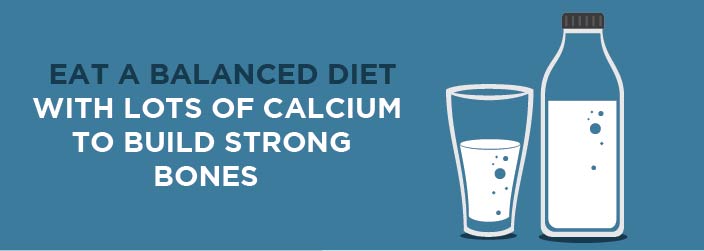
Tip: A strong body will resist injury better than a weak one. Eat a balanced diet with lots of calcium to build strong bones that keep you running fast. Hydration can also be tricky during the fall, often leading to dehydration and poor form that encourages injuries. Fall’s early months can be just as hot as the summer, so don’t skimp on water during practice and games just because the calendar says it’s late September. And don’t forget to stay hydrated during the chilly month of November, even though you may be sweating less than you did two months ago.
Execution: Drink before, during and after your game or practice. Try new veggies and fruits every week to keep your diet interesting. Find tasty sources of calcium to provide insurance for your bone health.
Have You or Your Child Sustained a Fall Sports Injury?
Sometimes, despite your best precautionary efforts, injuries happen. We’re here to help you get through them. If you or your child gets injured during a fall sports game or practice, contact OIP. We can help diagnose the problem quickly and work to have you or your child back in the game — after the proper amount of rest, of course.


